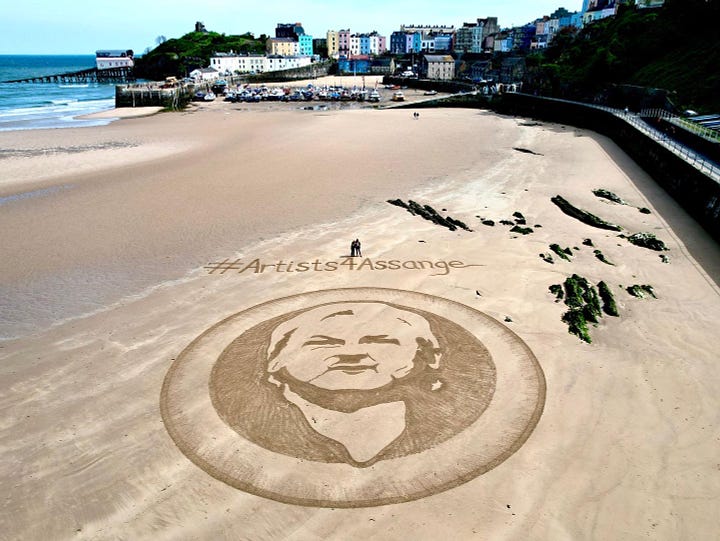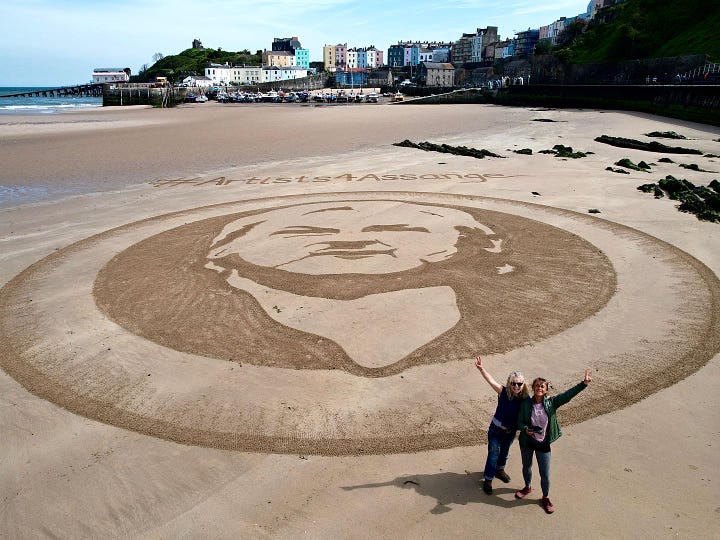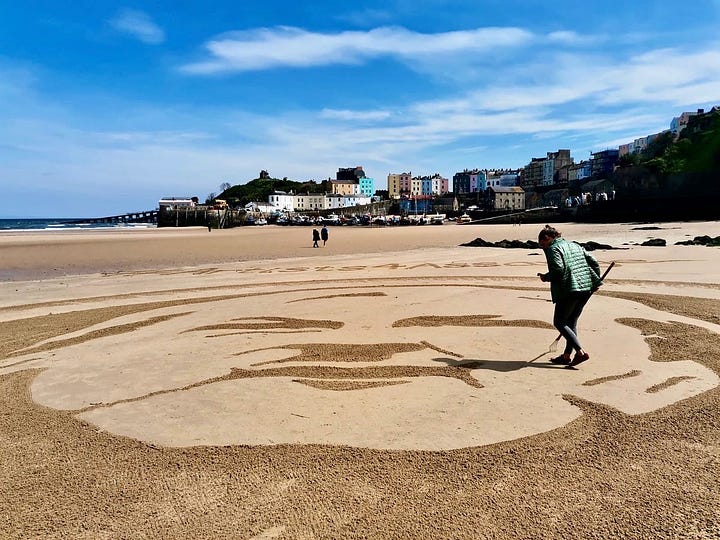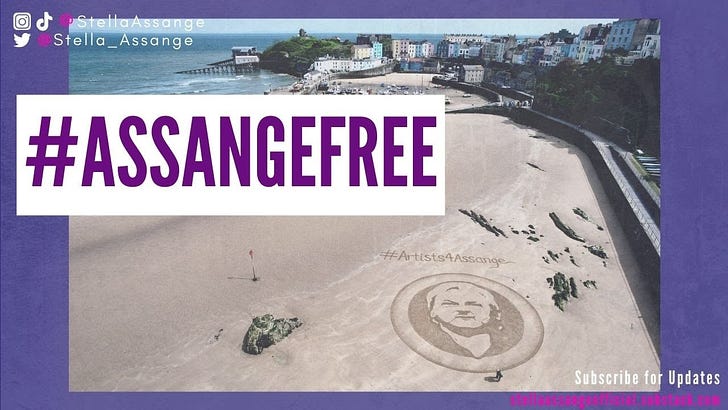"We can make more impact than we realise"
Sand Art as peaceful protest: Exclusive Interview with Artist Rachel Siamh
In May of 2023, Sand Artist Rachel Siamh created a sand portrait of Julian Assange to spread awareness about his case and call for his freedom.
Watch the video of the action here:




Read the exclusive interview with the artist below:
Thank you, Rachel for agreeing to do this interview. Julian is Free! We wanted to do this interview to highlight the incredible art piece you did to speak up for Julian. How do you feel about being part of this movement to free Julian? And what do you think is at this moment the most important thing you feel that you have learnt from this cause?
Thank you for this invitation.
I feel honoured to be a part of this movement and the mission to free Julian. It seemed to begin as a small wavering flame of hope which has been nurtured so intensely by the hearts and will of so many common folk from all around the globe. One person after another lighting a candle to the cause for freedom of speech and peace. To watch the intensity of this glow growing has been reassuring. The rise in these times for individuals and communities globally to take the initiatives for truth and justice activates the power to create vast waves of change as we have just witnessed through Julian's journey. My way is through art and an intention to offer a magic beyond understanding upon the sands. I've learnt much through this recent experience and also from the presence, resilience and message of Julians' predicament. I feel Julian and Stella through this cause has taught me more about boldness. These times call for transparency in a way maybe more than ever before. To boldly walk our talk and our heart's conviction in all the ways we deem possible. To be fearless and creative.
The artwork you made of Julian in the medium of sand art was really beautiful and intricate. Can you give us a little background of how and why you became a sand artist and what that process is like for you?
I first began to explore sand art around 12 years ago when I met my partner Marc Treanor; one of the first known sand artists.
His creativity and approach to his art deeply inspired me and I would join him frequently to help create these vast drawings on the sand, often geometric designs.
Sometimes he created large portraits using a grid which seemed at the time beyond my scope.
In 2020 on a trip to Cornwall, Marc went for a swim and drowned. Taking to the sands with my rake became a form of creative medicine for me. It was the place where I felt the continued connection with him and inspirations came to me very easily to create on the beaches. Twenty eight sand artists from around the globe offered their drawings towards a tribute for Marc in which I joined.
So without knowing it, drawing sand circles became my creative life. To begin with it was just a need to reach for my rake and to draw, as if it were a conduit from the galaxies to earth/sand. Then commissions came in. Often the themes of the commissions tie in with the nature of loss or release, such is the way also of sand art. Within around 4 hours of finishing a drawing, the tide comes in and receives it into the ocean. So I never see it as truly a loss but as an offering and a continuation of another aspect of itself. The moment when the sea touches the image is beautiful, a moment of intimacy; a kiss.
The experience of creating sand art not only brings me a sense of release, expansion and often joy, but also seems to touch those who are present at the time and who view the designs I make.
Like Marc, my creativity is very motivated by a love of Nature. I am not politically motivated but a deep sense of humanitarian rights, truth and freedom of expression are priorities in my life and environment.
How did the idea of doing a portrait of Julian come about?
I have followed Julian's journey the past 10 years or so and last year there was an image which kept capturing my attention of him. I kept the image on my dining room table and kept gazing into his eyes. I felt his call for freedom and justice and couldn't ignore it. I began to look through a few portraits of him and one struck me as doable as a large sand portrait. I felt it also held a strong sense of his integrity that I wished to portray.
Once the inspirations come, there's no backing out! I knew I had to bring Julian to the sands and in a public place. Stella was also very prominent in my wish to create this. I was very moved by her combination of strength, intelligence and sensitivity and with Marc having been taken from my physical world so quickly I also joined her in her mission to bring Julian home.
So, taking Julian to the vast sands, to the ocean and Nature, was my way of setting him free in the only way I could do for now.
Having only created a couple of animal portraits, I had not yet attempted a human portrait on the beach. I decided to do a trial run on Newport sands in Pembrokeshire near my home. It required a very large grid first to draw within. I use rope, a stick and a rake. It took around 4 hours whilst the tide was low.
There is always a magical moment once I finish a drawing and this day just as I finished and was about to send up the drone to check, a couple I knew appeared and asked what I was creating. They are both Buddhists and when I told them it was Julian Assange, they asked if they could chant for his freedom. It was very moving.
I sent up the drone and it had captured his essence well. I watched whilst the tide came in and brought him into the waves.
A few weeks later was World Press Freedom day so I heeded an inner call to take him to Tenby beach and create it more visibly under the promenade and the public eye. Many people cheered for him and others asked me about him. The local Observer ran an article about it.
A short while after the second drawing, one morning I awoke with an image of a crucifix and a sense that Julian is being slowly crucified. I rang a couple of friends and asked if they'd come to model for a short abstract film I made with Julian's portrait in the centre on a t-shirt and angels at the side. The sky lit up and clouds seemed to form a few more angels to reflect the piece.
What has been the response to this work of art and what would you like the public to takeaway from viewing it?
The portraits of Julian received much positive response. Firstly, they drew attention to a public who were unaware of the plight he was enduring in captivity. It opened discussions within our locality and prompted more artists to discuss and explore ways to release him and his portrait. I would like the public to take away a sense of the power of creativity and our own capacity alone or together to highlight important issues in our world and to inspire change through art. For it is our world and we can make more impact than we realise.




Beautiful and moving story!
A very inspirational and poignant journey.